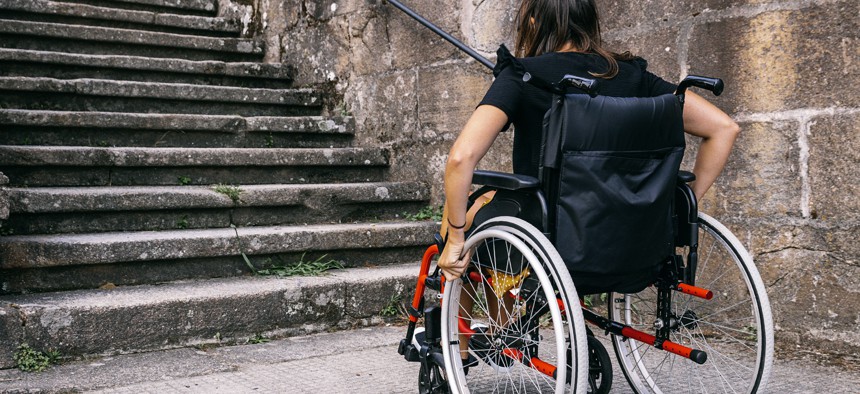Opinion: Eliminate ableism in New York’s community engagement and planning
Decision making at the municipal level is exacerbating barriers for people with disabilities.

Manu Vega - Getty
Ableism – that is, discrimination in favor of able-bodied people – is a pervasive issue in our society. People with disabilities often face exclusion and barriers to access in many areas of life. Decisions at the municipal level can exacerbate these barriers – or alleviate them.
Indeed, ableism is often present in municipalities’ community engagement and planning processes. For example: town hall meetings that certain residents can’t access, or public comment periods that some don’t feel comfortable, or even able to engage with. This, in turn, creates a negative feedback loop: If people with disabilities aren’t able to participate in designing their towns and cities, they’re likely to face even more barriers down the line.
The presence of ableism in community engagement and planning is something New York’s municipal leaders should take seriously. New York is one of the country’s most populous and diverse states. It’s also one of the most geographically varied states, from the crowded neighborhoods of Manhattan to the suburbs of Long Island and Westchester or the sprawling countryside of the Finger Lakes region. The state is home to a large community of people with disabilities who can, and do, face a number of challenges. According to the University of New Hampshire’s 2021 Annual Disability Statistics Compendium, 33.8% of people with disabilities in New York State are employed, lower than the 37% nationally. Further, 30.5% of New Yorkers with disabilities live in poverty, compared to 27.8% nationally.
So what can New York’s municipal leaders do to ensure they are combating ableism in community engagement and planning?
First, identify all forms of ableism.
Disability exists on a broad spectrum, from physical to intellectual to sensory and beyond. For that reason, municipal leaders must start this process by identifying all the ableist barriers in their community engagement process, not just the most overt ones. The only way to do this work effectively is to collaborate with impacted communities. Municipal leaders must invite advocates and people with disabilities from across the disability spectrum to engage as equal partners who can directly share the challenges they face, as well as potential solutions. Respect the slogan, “Nothing about us without us.”
Once instances of ableism are identified, municipal leaders should consistently review their community engagement processes to ensure no one is being left out. The following questions should be asked regularly and at the start of every community engagement process: What are all the barriers to engagement people with disabilities in this community face? What are the specific barriers that may present themselves in this project? How can we ensure that everyone has the opportunity to engage fully and equitably on the project?
Then, make a real investment in countering ableism in all its forms.
If a municipality is genuine about eliminating ableism, they need to invest in people, positions, and policies that truly make this work a priority. New York recently appointed its first-ever Chief Disability Officer, indicating a bold stance on advocating for the rights of New Yorkers with disabilities. “The new Office of the Chief Disability Officer will ensure we remain accountable to the pursuit of a more diverse, inclusive, and equitable New York,” explained Governor Kathy Hochul.
Since the post is still brand new, it’s too soon to judge its impact. But the appointment itself signals that the state is prioritizing inclusive and equitable engagement with constituents with disabilities and sets an example for municipalities across the state. It also demonstrates that New York believes the status quo – like the protections laid out in the Americans with Disabilities Act – can’t solve ableism alone.
Further, eliminating barriers to inclusion for people with disabilities also facilitates participation by all populations as it provides a greater range of accessible ways to engage. With these two strategies top of mind, municipal leaders will be in a much better position to begin eliminating ableism in their community engagement and planning. Working alongside the disabled community to map existing ableism, coupled with an investment in confronting it, sets up municipalities to build more inclusive and equitable communities – from infrastructure to job opportunities and beyond.